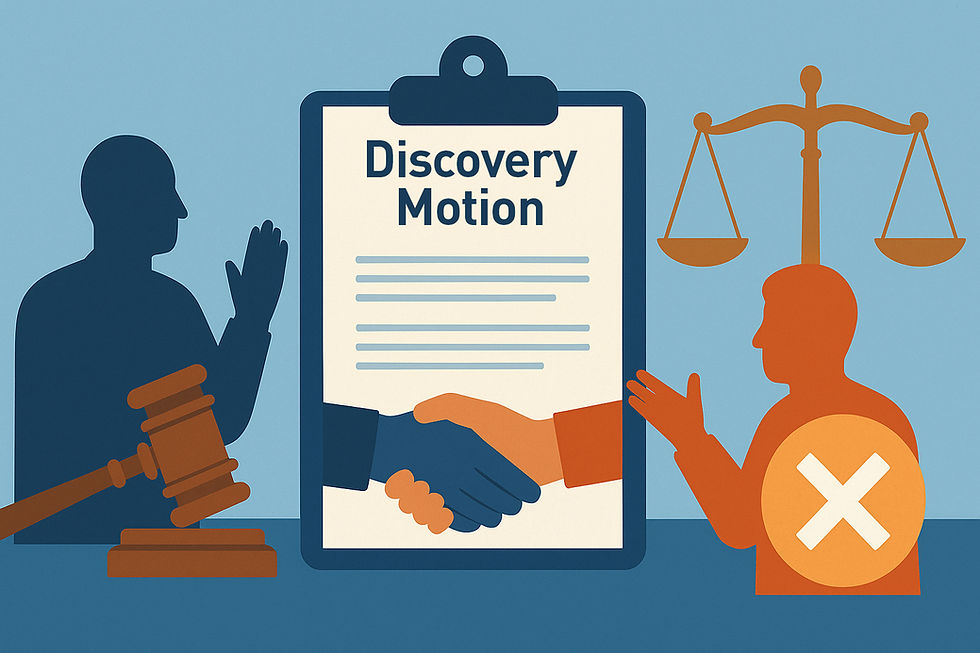Avoiding Common Trademark Application Mistakes
- Yakup Sari, Esq.

- Jan 13
- 3 min read
Filing a trademark application is a critical step in protecting your brand. However, the process is complex, and even small errors can lead to delays, rejections, or potential loss of trademark rights. In this article, we’ll discuss some of the most common mistakes applicants make and how to avoid them to ensure a smooth registration process.

1. Failing to Conduct a Thorough Trademark Search
One of the most common and costly mistakes is not performing a comprehensive search before filing. Many applicants assume their trademark is unique without checking for similar marks.
How to Avoid It:
Search the USPTO’s Trademark Electronic Search System (TESS) for existing trademarks that are identical or similar to yours.
Consider phonetic, visual, and conceptual similarities.
Work with a trademark attorney to perform a detailed search, including unregistered marks in common law databases and state registries.
2. Choosing a Weak or Descriptive Trademark
Trademarks that merely describe the product or service are often refused by the USPTO. For example, "Best Coffee Shop" for a coffee business is too generic and lacks distinctiveness.
How to Avoid It:
Opt for fanciful (made-up), arbitrary (unrelated to the product), or suggestive marks that require imagination to connect to the goods or services.
Avoid generic terms and strive for a name that stands out in your industry.
3. Incorrectly Identifying Goods and Services
Misclassifying or inaccurately describing your goods and services can lead to application rejection or future limitations in your trademark protection.
How to Avoid It:
Review the USPTO’s Trademark ID Manual to determine the correct classification for your goods and services.
Provide a clear and specific description that matches your business offerings.
Seek legal advice to ensure proper identification.
4. Filing Without Proper Ownership
Filing under the wrong entity name—whether an individual or a business—can cause complications or invalidate your trademark.
How to Avoid It:
Ensure the owner of the trademark is correctly listed. If your business owns the trademark, the application should be filed under the business’s legal name.
Update ownership details if your business structure changes after filing.
5. Overlooking Potential Conflicts in Related Classes
Even if a mark in your exact class isn’t identical, marks in related classes could pose a conflict. For instance, a trademark for a clothing brand (Class 25) might conflict with a trademark for online retail services (Class 35).
How to Avoid It:
Research not only your class but also related classes where similar marks might exist.
Consult an attorney to assess potential risks across different classifications.
6. Misusing the Trademark Symbol (™ or ®)
Using the ® symbol before your trademark is registered can result in penalties, as it is reserved for federally registered trademarks.
How to Avoid It:
Use the ™ symbol for unregistered trademarks to indicate your claim of ownership.
Only use the ® symbol once your trademark is officially registered with the USPTO.
7. Ignoring Deadlines and Renewal Requirements
Trademark registration is not a one-time process. Missing deadlines for responding to USPTO actions or renewing your trademark can result in abandonment.
How to Avoid It:
Monitor your application timeline and promptly respond to any Office Actions.
Renew your trademark between the 5th and 6th year after registration, and every 10 years thereafter.
Work with a trademark attorney to manage deadlines effectively.
8. Not Considering International Use
If you plan to expand your business overseas, failing to register your trademark internationally can leave you vulnerable to infringement.
How to Avoid It:
File for international protection through the Madrid Protocol or register directly in target countries.
Conduct trademark clearance searches in those countries to avoid conflicts.
9. DIY Applications Without Professional Help
While the USPTO allows applicants to file on their own, the process is intricate, and mistakes can be costly.
How to Avoid It:
Hire an experienced trademark attorney who can guide you through the application process and address potential issues before filing.
Professional assistance ensures your application is complete and has the best chance of success.
In Conclusion
Avoiding these common mistakes can save time, money, and frustration during the trademark application process. A well-prepared application not only increases the likelihood of approval but also provides robust protection for your brand.
At trademark attorney Yakup Sari at Sari Law Firm based in Orange County, California, specialize in helping businesses secure and protect their trademarks. Contact us today for expert guidance and personalized support to ensure your application process is smooth and successful.




Comments